We use cookies to make your experience better. To comply with the new e-Privacy directive, we need to ask for your consent to set the cookies. Learn more.
Information
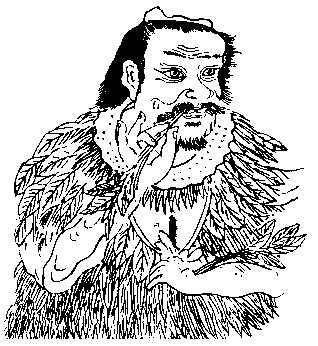
King Shen Nong Once upon a time there was a king who tried all the herbs in nature to find something edible or healing for his people. He was poisoned 72 times in one day alone, saving only the leaves of a single plant - the tea leaves - were able to make it. However, one no longer expects tea to provide such spectacular cures as those described in this Chinese legend about the discovery of the tea plant in China. Nevertheless, all sorts of healing effects are attributed to tea, the leaves as well as its infusion, so that one can almost speak of a miracle plant.
Camellia sinensis and Camellia japonica
What is this plant that so many people
fascinated for thousands of years? The tea plant (botanical: Camellia sinensis, see illustration)
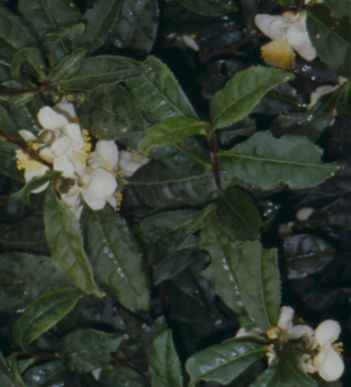
Camellia sinensis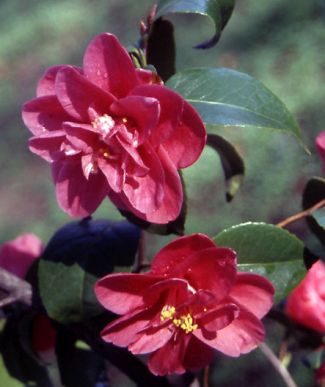
Camellia japonica
The tea plant is a close relative of the flowering plant camellia (Camellia japonica, see illustration),
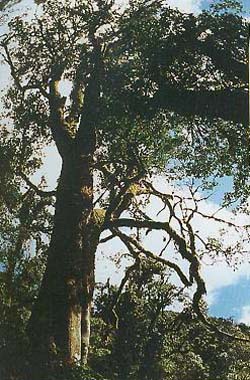
oldest tea tree both belong to the family Theaceae and the genus Camellia. The evergreen Tea plant has two variations: Camellia sinensis Var. sinensis and Camellia sinensis Var. assamica. The former grows as a shrub, has smaller leaves, and is more resistant to cold. The the latter grows in tree form, has larger leaves, and is sensitive to cold. In plantations Camellia sinensis sinensis mainly grown in China. In contrast, Camellia sinensis assamica mainly grown in India and Sri Lanka. In plantations the tea plants are held only up to hip height. The leaves of the variation Assamica contain considerably more catechins than those of the Sinensis and are more suitable for processing into black tea.
The natural range of the tea plant is the southwest of China, mainly in today's Yunnan
Yunnan
 province. This is probably also where the most consumed non-alcoholic beverage in the world, apart from water, began its triumphal march.
The oldest tea tree also thrives in a jungle in the south of Yunnan.
It is about 2700 years old, has a height of 26 metres and a maximum circumference of 2.8 metres.
province. This is probably also where the most consumed non-alcoholic beverage in the world, apart from water, began its triumphal march.
The oldest tea tree also thrives in a jungle in the south of Yunnan.
It is about 2700 years old, has a height of 26 metres and a maximum circumference of 2.8 metres.

Camellia sinensis

Camellia japonica

oldest tea tree both belong to the family Theaceae and the genus Camellia. The evergreen Tea plant has two variations: Camellia sinensis Var. sinensis and Camellia sinensis Var. assamica. The former grows as a shrub, has smaller leaves, and is more resistant to cold. The the latter grows in tree form, has larger leaves, and is sensitive to cold. In plantations Camellia sinensis sinensis mainly grown in China. In contrast, Camellia sinensis assamica mainly grown in India and Sri Lanka. In plantations the tea plants are held only up to hip height. The leaves of the variation Assamica contain considerably more catechins than those of the Sinensis and are more suitable for processing into black tea.
The natural range of the tea plant is the southwest of China, mainly in today's
 Yunnan
Yunnan

 It is true that since the end of the 19th century there have been voices, mainly from England,
who claimed that the tea plant originally came from India and the Chinese variation would be a derived form of the original plant from India.
Interestingly, these claims arose almost simultaneously with the efforts the English,
in Assam and Darjeeling their to establish tea plantations.
Experts suspect that behind these assertions, there is more a marketing strategy of the English was stuck as scientific research work.
It is true that since the end of the 19th century there have been voices, mainly from England,
who claimed that the tea plant originally came from India and the Chinese variation would be a derived form of the original plant from India.
Interestingly, these claims arose almost simultaneously with the efforts the English,
in Assam and Darjeeling their to establish tea plantations.
Experts suspect that behind these assertions, there is more a marketing strategy of the English was stuck as scientific research work.
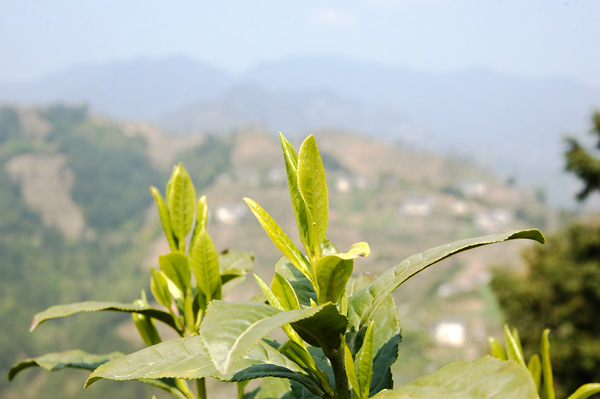
Teeblätter This is why this "Out of India" theory is hardly taken seriously by experts today, especially since the Indians before the British colonial rule did not even know the benefits of the tea plant and did not even have a term for tea in their language.
Like many other evergreen plants the tea plant has shiny, leathery leaves with strongly serrated edges. The youngest and still young leaves are, especially on the underside, fluffy hairs and thus obtain a silvery, silky shine. This hairy youngest leaves are essential for the production of White Teas. Also for many high-quality Green teas, this hairiness is an important feature (see the chapters Top 10 list of China teas and the quality of the tea ).

